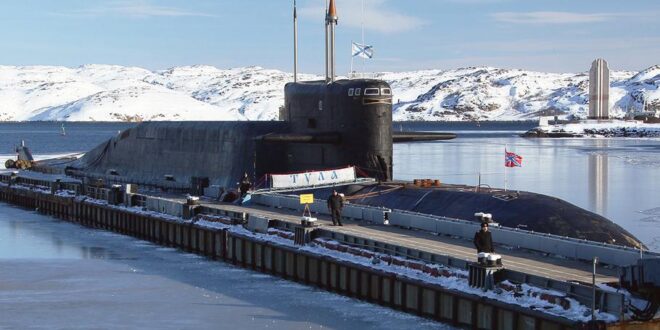An ambitious new Russian maritime strategy introduced this week aims to challenge the global reach of the U.S. Navy, but it remains to be seen whether the plan is more than Moscow’s standard bravado, analysts say.
The 55-page document, signed by Russian President Vladimir Putin on Sunday during the country’s Navy Day celebrations, updates Russia’s maritime strategy as the Kremlin wages war in Ukraine after a full-scale invasion that began Feb. 24.
Moscow wants to push back on what it sees as Western efforts to limit Russian access to the world’s oceans and transportation lanes in an effort to establish U.S. naval supremacy.
The doctrine also specifies that NATO expansion toward Russia’s borders is unacceptable, according to a report Sunday by Russian news agency Tass.
This week, the U.S. Senate voted to ratify NATO membership for Finland and Sweden, which responded to Russia’s unprovoked invasion by relinquishing decades of neutrality and asking to join the alliance.
In a series of tweets Monday about the strategy, Samuel Bendett, an adjunct senior fellow at the Center for a New American Security, said it also prioritizes environmental research, development of a secure information system in the Arctic and better technologies to develop weapons systems, among other goals.
Russia’s latest maritime doctrine is not fundamentally different from earlier versions, Bendett tweeted. Russia also wants to increase activity in the Indian Ocean to better relations with India, Iran, Iraq and Saudi Arabia, Bendett noted.
“There are still questions if Russia has the resources for such an expansive commitment given the ongoing war in Ukraine and the resources needed to sustain it,” Bendett tweeted.
Analysts point out that Russia’s fleet consists mostly of smaller ships that are outmatched by the U.S. blue water fleet, which includes 11 aircraft carriers and 92 cruisers and destroyers, among other ships.
The U.S. also maintains some 50 attack submarines, 14 ballistic missile submarines and four cruise missile submarines, according to data at USO.org.
However, Russia’s small but capable nuclear submarine fleet does pose a threat that could be used against the U.S., analysts have said.
Russia has about 210 ships, of which about 55 are fully functional blue water ships and submarines, Wolfgang Pusztai, a senior analyst at the Austrian Institute for European and Security Policy, said Monday on the al-Jazeera television program “Inside Story.”
He said that of those 55, about half the vessels are modern.
“This means that it’s unlikely that the Russians will be able to threaten American sea control,” Pusztai said. “(The Kremlin’s) aim is not so much to dominate the seas but to challenge U.S. sea control.”
Russia’s only aircraft carrier, the Admiral Kuznetsov, started an overhaul in 2017 but has been beset by problems and won’t return to service until at least 2024.
To that end, Moscow also pledged in the document to develop a modern, high-tech shipbuilding industry, specifically referencing the capability to build more aircraft carriers, Tass reported.
Moscow’s national maritime policy in the Atlantic Ocean is a response to the existence of NATO, whose activity “is aimed at direct confrontation with the Russian Federation and its allies,” Tass reported the document as saying.
 Eurasia Press & News
Eurasia Press & News



